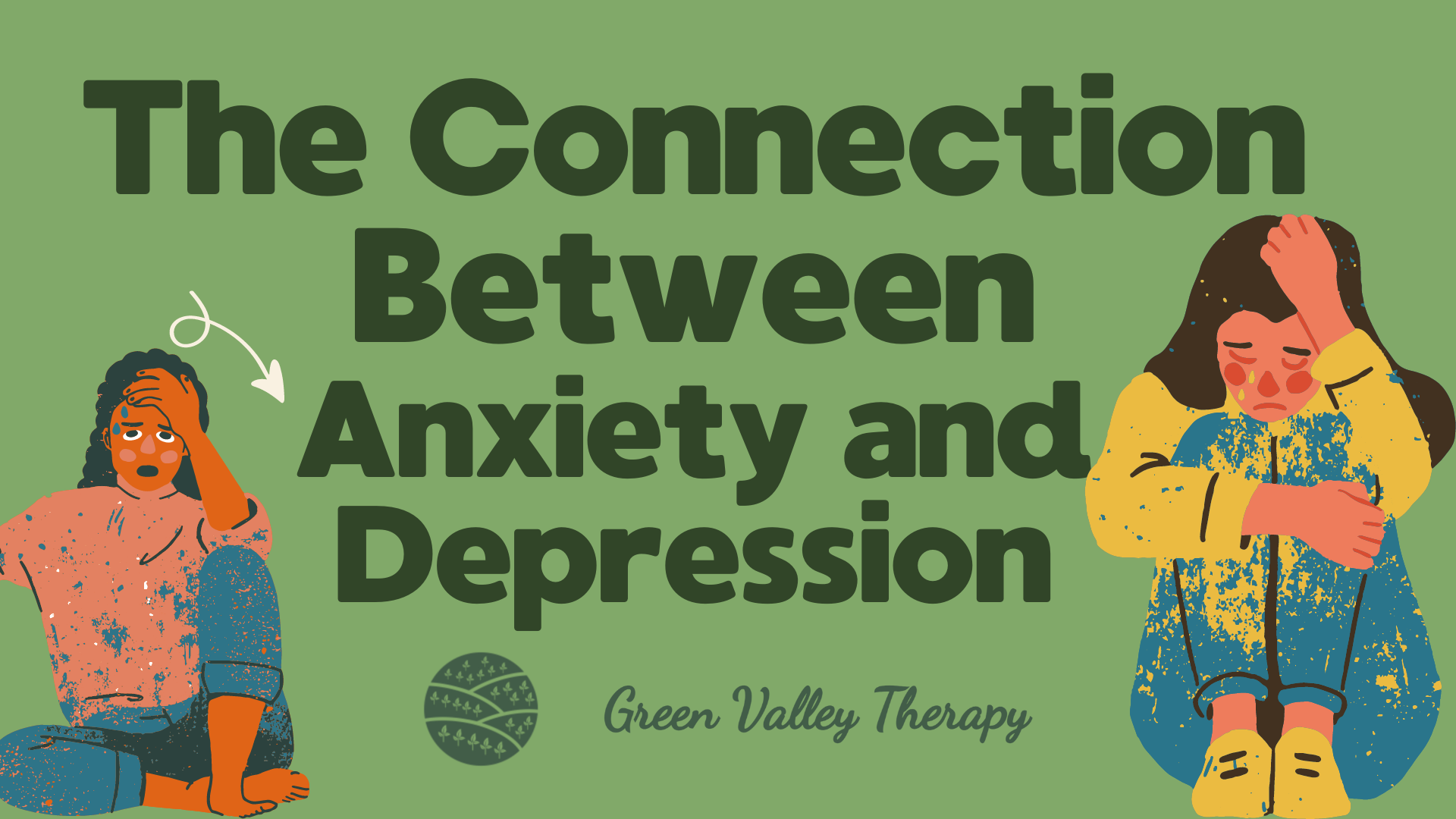The Connection Between Anxiety and Depression
In the intricate and multifaceted landscape of mental health, the intertwined and co-occurring nature of anxiety and depression is a profound reality experienced by a significant number of individuals.
These two conditions often intersect and can have a profound impact on an individual's well-being and quality of life.
At Green Valley Therapy, our commitment to providing comprehensive therapy for depression encompasses the nuanced understanding of its connection with anxiety. This blog post delves into the complex relationship between these two conditions, aiming to enlighten, educate, and offer a path forward for those affected.
The Coexistence of Anxiety and Depression
The coexistence of anxiety and depression is a widespread occurrence within the global population, often presenting as a complex intertwining of these two mental health conditions.
This frequent co-occurrence poses challenges for diagnosis and treatment, emphasizing the need for mental health professionals to possess a deep understanding of the nuances associated with each condition and the ways in which they interact.
Understanding the Overlap
Anxiety, characterized by persistent worry and fear, and depression, marked by a deep sense of sadness and loss of interest, share more than just common symptoms. They can stem from similar genetic vulnerabilities and environmental factors and even share neurological pathways. The overlap is influential, with nearly half of those diagnosed with depression also experiencing symptoms of anxiety.
At Green Valley Therapy, we understand the importance of identifying the interconnectedness of these conditions. Our approach to therapy for depression is informed by the latest research, which guides us in addressing both anxiety and depression comprehensively.
The Impact on Treatment
The coexistence of both anxiety and depression calls for a comprehensive and tailored treatment approach. Cognitive Behavioral Therapy (CBT), renowned for its effectiveness in addressing depression, has also been found to be advantageous in treating anxiety disorders.
CBT involves the identification and confrontation of negative thought patterns and behaviors, equipping individuals with practical strategies to effectively cope with and alleviate their symptoms.
Moreover, mindfulness techniques and interpersonal therapy can offer additional support, helping individuals to develop healthier relationships and coping mechanisms. Our therapists at Green Valley Therapy specialize in these treatments, ensuring a personalized therapy experience that considers the unique experiences and needs of each individual.
The Significance of Early Intervention
Recognizing the early signs of anxiety and depression and seeking professional help at the onset of symptoms is crucial for effective management and recovery. Early intervention can help prevent the escalation of symptoms, improve treatment outcomes, and support a more successful recovery process.
Seeking Help
Taking the initial step to seek help can be daunting, but it's an essential part of the path toward healing. At Green Valley Therapy, we offer a safe and confidential space where individuals can delve into their emotions and worries with experienced therapists who specialize in understanding the intricacies of anxiety and depression. Our goal is to provide a supportive environment where clients feel heard and empowered to work towards their recovery.
A Word From Green Valley Therapy
The connection between anxiety and depression underscores the complexity of mental health issues. At Green Valley Therapy, we are dedicated to offering a compassionate and comprehensive approach to therapy for depression, recognizing the critical need to address anxiety concurrently. If you or a loved one are navigating the challenges of anxiety and depression, we invite you to explore our services and take the first step toward healing.



